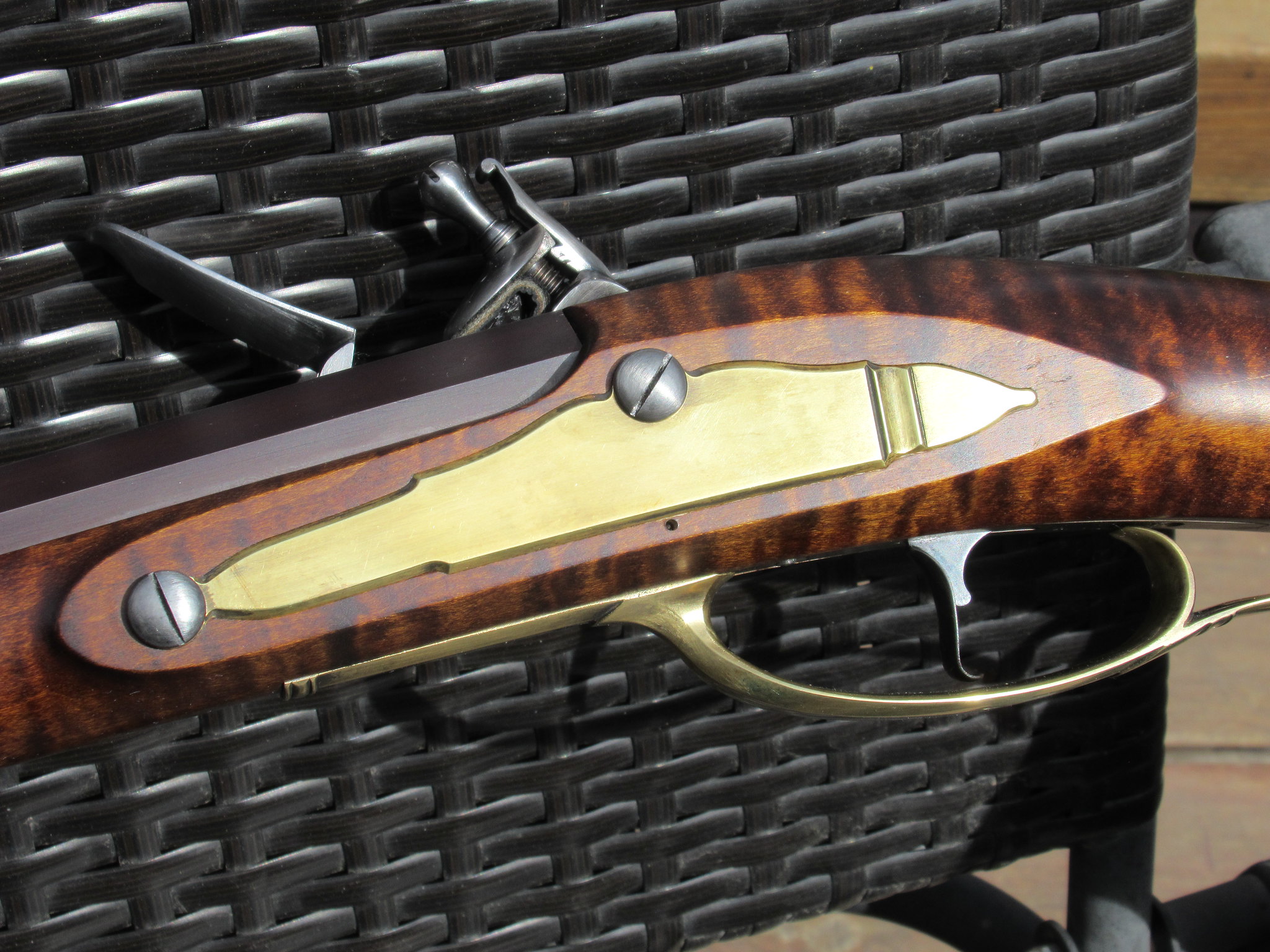Phil Coffins
69 Cal.
I've got vices too but I don't brag about them. 



Polishing wheel and variety of polishing sticks.
 IMG_0536 by Oliver Sudden, on Flickr
IMG_0536 by Oliver Sudden, on FlickrLooks to me like you rushed things and went to finer grits too soon.Help me out guys. I’m trying to polish the flat brass inlay. I got down to #0000 steel wool and 3000grit wet sandpaper but I can’t get rid of fine scratch marks. Hopefully the pics reveal what I’m struggling with.
Is there fiber grade steel wool or sandpaper? Should I try something else??
View attachment 28374
View attachment 28375
I head to Ace hardware and pick up some 2200 grit. 3000 grit will polish glassOk. I agree—probably went to the finer grains too soon. Will tackle it again.

Thanks. I’m learning.Much improved.
Phil-I’m intrigued that you blued your brass. I thought people only blued steel. I’m going to brown my barrel and the nose cap (mine is steel). What happens if you brown brass? I plan on using the cold-brown...Much improved.
Help me out guys. I’m trying to polish the flat brass inlay. I got down to #0000 steel wool and 3000grit wet sandpaper but I can’t get rid of fine scratch marks. Hopefully the pics reveal what I’m struggling with.
Is there fiber grade steel wool or sandpaper? Should I try something else??
View attachment 28374
View attachment 28375
 IMG_0540 by Oliver Sudden, on Flickr
IMG_0540 by Oliver Sudden, on FlickrHelp me out guys. I’m trying to polish the flat brass inlay. I got down to #0000 steel wool and 3000grit wet sandpaper but I can’t get rid of fine scratch marks. Hopefully the pics reveal what I’m struggling with.
Is there fiber grade steel wool or sandpaper? Should I try something else??
View attachment 28374
View attachment 28375
Yes, I do recall that, and I've been following that advice more closely now.Remember this post in your "Advise for a Newbie" thread?
"One of the biggest challenges when polishing, especially softer materials such as brass and silver is keeping surfaces as intended. Keep flats flat, angles angled, edges crisp, dont dish out screw holes and countersinks etc.
A tool I like to use are jewelers polishing sticks, basically paint stirring sticks (although thicker and flatter) with different grits. Snag them online unless you have a jewelry supply store close. Conveyor belting works well for a backer as well.
ALWAYS use a backer on your abrasive! If you just sand/polish away with your fingertips you will induce divots and waviness.
Polishing is a progression of grits, coarse to fine. Every time you switch to a finer grit abrasive sand/polish in a different direction, this will let you see the sanding marks from your previous sanding-get rid of all marks from the previous grit! If you sand/polish in one direction only it is easy to "camouflage" heavier scratches and they will show in the finished product."
Huh!
Whodathunkit?
Indeed, that does look aged and attractive. I wonder if anyone has used the browning solution could chime in too. I plan on buying the Laurel Mountain cold brown.Using 44/40 cold blue turns the brass black then rubbing it back gives it a bit of an aged look and better shows the contours. I've never tried brown solution on brass.
Enter your email address to join: